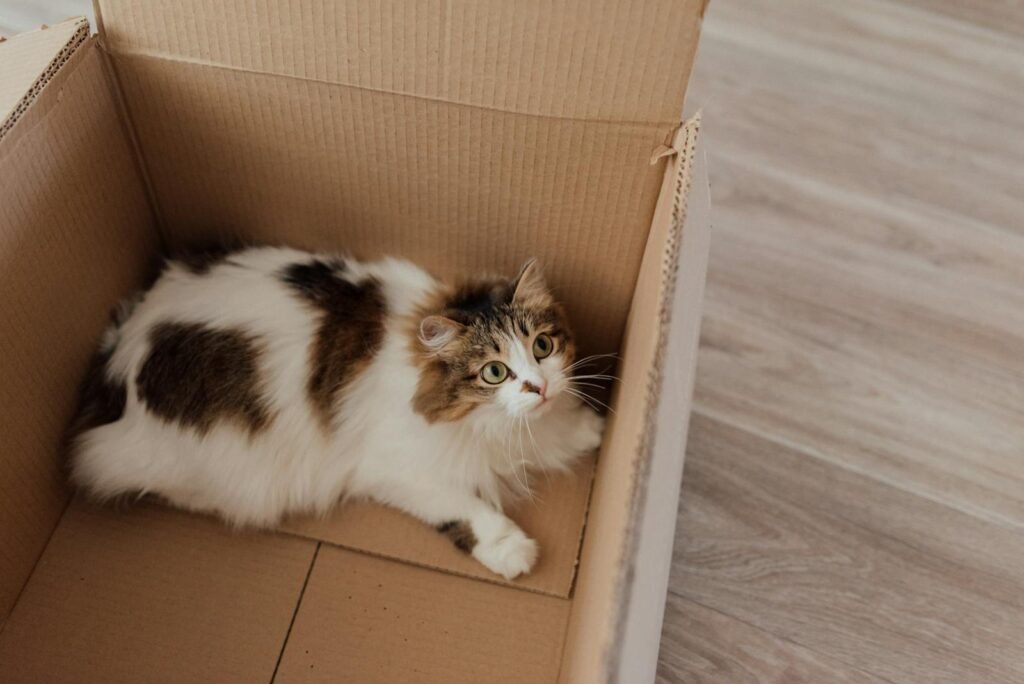Have you ever wondered why your feline friend seems inexplicably drawn to small boxes? Whether it’s a cardboard box or a cozy shoebox, many cats appear irresistibly attracted to them. This behavior has piqued the interest of pet owners and scientists alike. Let’s uncover the mysteries behind this intriguing feline fascination.
The History of Feline Behavior

To understand why cats might love small boxes, it’s beneficial to explore the evolutionary and behavioral history of cats. Domesticated cats retain many instincts and behaviors from their wild ancestors. Understanding these evolutionary roots provides a foundation for why certain preferences, like sitting in boxes, might exist.
The Comfort of Containment

One of the most widely accepted theories is that cats find comfort in confined spaces. Boxes provide a sense of safety and security, reminiscent of the spaces feral cats might seek when hiding from predators or resting. This secure environment envelops them, creating a cozy and controlled space.
Temperature Regulation

Cats often seek warmth, and small spaces like boxes can offer a temperature-regulated environment. The enclosed space of a box can trap body heat, providing a warm, snug setting that appeals to a cat’s preference for higher temperatures—often between 86 to 97 degrees Fahrenheit.
Stress Reduction and Anxiety Relief

Research suggests that the enclosed nature of boxes helps reduce stress in cats. In environments where cats might feel overwhelmed or anxious, a box offers a safe retreat. This behavior—using a sanctuary to escape stressors—can be seen in both wild and domesticated cats.
Enhanced Focus and Observation

Sitting in a box also allows cats to survey their surroundings without being easily detected. This concealed observation is essential for understanding territory dynamics. It allows them to feel hidden while still assessing their environment, satisfying both their predatory instincts and need for security.
Instinctual Behavior and Play

The playful nature of cats is often stimulated by the sight of a box. It becomes an object of curiosity and play, allowing them to explore, hide, and pounce. This can be linked to their natural hunting instincts where small movements and confined spaces mimic the conditions under which they might hunt or play in the wild.
Territoriality and Scent Marking

Cats are territorial animals, and they use scent marking to indicate ownership. When a cat sits in a box, it may rub its face and body against the sides, leaving pheromones that mark the box as part of its territory. This behavior reinforces the sense of security and ownership over their environment.
The Role of Curiosity

Curiosity is a significant characteristic of feline behavior, and boxes often represent something new to explore. Cats are naturally curious creatures, and a new box presents unfamiliar scents, shapes, and textures that intrigue them, offering new experiences to investigate.
Scientific Studies and Findings

Numerous scientific studies have explored why cats are attracted to boxes. For instance, a study conducted by the University of Utrecht discovered that boxes could reduce stress levels in shelter cats. Other observational studies have confirmed that the presence of boxes in a cat’s environment contributes significantly to overall happiness and contentment.
Conclusion: A Multifaceted Attraction

The love cats have for sitting in small boxes is a multi-layered behavior rooted in their evolutionary past, instinctual needs, and environmental interactions. From providing warmth and security to fulfilling predatory instincts, boxes meet a variety of needs that appeal to feline behavior. Understanding these aspects can help cat owners create more enriching and comforting environments for their beloved pets.

Growing up traveling and experiencing new cultures and wonders, I have had a passion for nature, adventuring, photography, and videography. I am currently working towards a BSc in Biodiversity and Ecology at Stellenbosch University, and I hope to specialise in Marine Sciences one day.
Please send any feedback to Feedback@animalsaroundtheglobe.com






